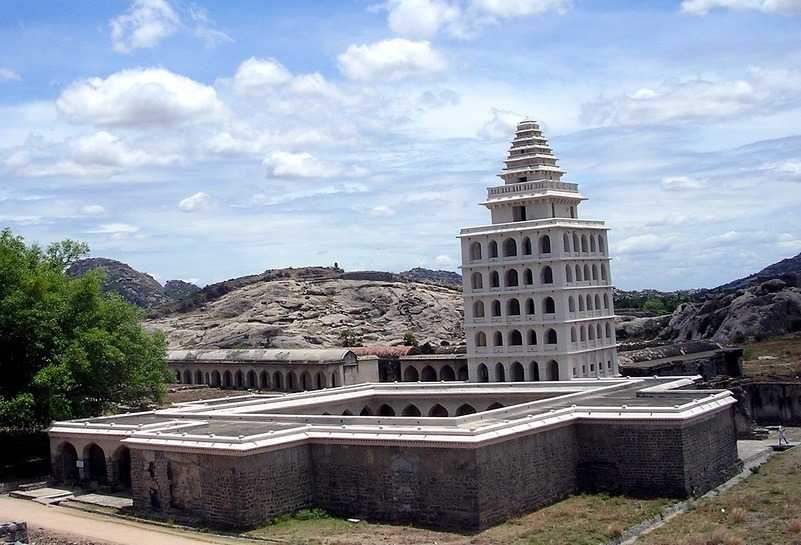At a distance of two km from Gingee Bus Stand, 71 km from Puducherry, 85 km from Kanchipuram and 93 km from Vellore, Gingee Fort or Senji Fort in Villupuram District is among the largest surviving forts in Tamil Nadu. The fort was traditionally thought of most impregnable and it was referred to as the ‘Troy of the East’ by the British. The fort is among the outstanding vacationer locations to go to close to Villupuram & Chennai additionally among the many finest places near Chennai & Pondicherry for a day journey.
Initially the location had a small fort constructed by the Chola dynasty throughout ninth century. Gingee Fort, often known as Chinji or Jinji, was modified by Kurumbar whereas preventing the Cholas and once more by the Vijayanagara Empire throughout the 13th century. As per one account, the fort was constructed throughout the 15-16th century by the Gingee Nayaks, the lieutenants of the Vijayanagara Empire and who later turned unbiased kings. The fort handed to the Marathas below the management of Shivaji in 1677 AD, the Mughals, Carnatic Nawabs, French and the British in 1761.
The Gingee Fort advanced is unfold on three hillocks, Krishnagiri to the north, Rajagiri to the west and Chandrayandurg to the southeast. The three hills collectively represent the fort advanced, every having a separate and self-contained citadel. The primary hill, the place the primary fort is, is named Rajagiri. The fort partitions are 13 km lengthy and the hills are linked by partitions enclosing an space of 11 sq. kms. It was constructed at a peak of 800 ft and guarded by an 80 ft large moat. One has to move by an extended flight of steps alongside the rocky hill observe to discover the fort.
The advanced has a seven storey Kalyana Mandapa, granaries, jail cells, and a temple devoted to its presiding Hindu goddess referred to as Chenjiamman. The fortifications comprise a sacred pond referred to as Aanaikulam. On the highest of the hillock, there are few minor fortifications.
The Kalyana Mandapa is among the most tasty monuments within the fort that’s inbuilt Indo-Islamic model. It consists of a sq. courtroom, surrounded by rooms. In the midst of this courtroom, there’s a 27 m excessive sq. tower, constructed of stone. The tower has a pyramidal roof. On the western aspect of the Kalyana Mandapa one can see a sequence of low vaulted and arched cells which are known as the Barracks and Stables, however now it has been transformed into Archaeological Conservation Coaching camp.
Vekataramana Temple is positioned within the decrease fort, the temple comprises a exceptional sculpture depicting Lord Krishna enjoying on the flute. That is the most important temple in Gingee, which was constructed by Muthiah Nayaka in 1550 AD. Ranganathar Temple, bell tower, watch tower, cannon are positioned atop the Rajagiri hill.
The second necessary hillock with an imposing citadel is named Krishnagiri. The Krishnagiri fort lies to the North of Tiruvannamalai street. It’s smaller in dimension and elevation in comparison with Rajagiri fort. A flight of steps carved on granite stones results in its prime. One other fort linked with Rajagiri with a low rocky ridge is named Chandrayana Durg or Chandragiri.
